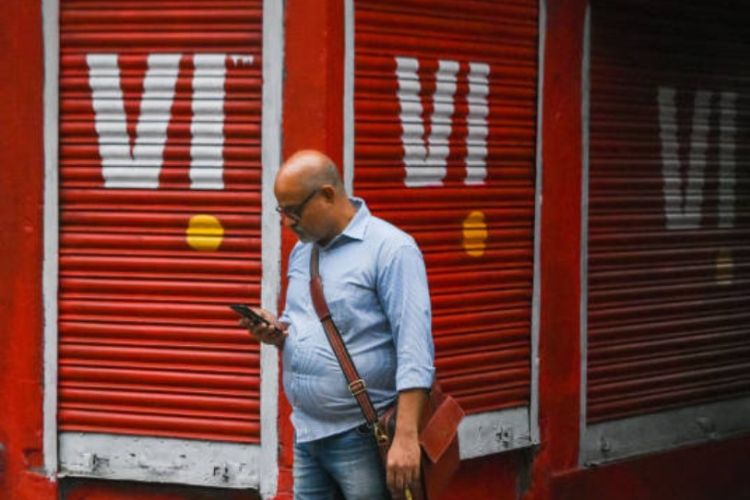
In yet another attempt to resuscitate a floundering telecom operator, the government has decided to convert an additional Rs 36,950 crore of Vodafone Idea’s dues into equity, raising its ownership to nearly 49%. This follows an earlier conversion that gave the government a 23% stake in the company. The state is now, effectively, the single-largest shareholder in a private telecom firm fighting for survival.
Once a symbol of India’s economic liberalisation, the telecom sector has, over the years, morphed into a cautionary tale. In the early 2000s, it stood as a beacon of technological progress and investor optimism. Today, it resembles a duopoly dominated by Reliance Jio and Bharti Airtel, with BSNL and Vi barely holding on at the margins. The crisis at Vi, however, is of particular concern — it carries the baggage not only of debt, but also of global investor expectations.
READ | PLI scheme @5: India’s manufacturing gamble needs a strategic reset
What went wrong with Vodafone Idea
Vodafone Idea was born out of the 2018 merger between two struggling operators, Vodafone India and Idea Cellular. The merger was meant to create India’s largest telecom firm. Instead, it became a case study in how policy unpredictability and regulatory shocks can cripple even the most ambitious ventures.
The fatal blow came in 2019, when the Supreme Court upheld the government’s interpretation of Adjusted Gross Revenue (AGR), saddling Vi with an enormous bill. While Reliance Jio, a late entrant, had no legacy AGR liabilities, Vi found itself crushed under a mountain of dues — Rs 2.27 lakh crore in total, including Rs 1.57 lakh crore in spectrum charges and Rs 70,300 crore in AGR dues as of Q3FY25.
This isn’t just Vi’s problem. It reflects the deeper malaise of a sector strained by fierce competition, punishing capital requirements, and regulatory rigidity. The government’s latest equity conversion may ease Vi’s immediate liquidity crunch—the moratorium on spectrum and AGR payments ends this September—but it addresses only the symptoms, not the disease.
The foreign investor dimension
Vi’s troubles carry geopolitical overtones. Vodafone, a British telecom giant, was among the first global players to bet on the India story. What it faces now is a creeping nationalisation of its investment. No foreign investor enters India expecting that their equity will one day be forcibly diluted by a government bailout.
The AGR debacle has already dented India’s reputation as a stable, rules-based investment destination. The perception that regulatory decisions are skewed to favour one player —Jio, in this case—further muddies the waters. In a capital-intensive sector like telecom, investors seek not just opportunity, but predictability. Vi’s fate may well be cited as a case study in boardrooms on why foreign capital remains wary of India’s policy climate.
A fragile third wheel
Across the world, telecom markets tend toward consolidation. Sustaining three or more players is difficult in an industry that demands constant reinvestment in technology and infrastructure. In India, Vi’s continued existence as the third player is under perpetual question. How long can it hold out? And at what cost?
Ironically, a viable Vi is in the interest of Airtel and Jio as well. A desperate Vi may trigger a price war, but a stronger Vi will push competition toward quality of service—network coverage, speed, and customer experience. That is what the market truly needs.
The alternative, a duopoly, would spell disaster for consumers. With just two players in control, price discipline could give way to cartel-like behaviour. The affordability that powered India’s digital leap over the past decade could become a thing of the past.
The larger picture
Telecom is not just another sector. It is the backbone of India’s digital economy—from e-commerce and fintech to online education and digital governance. A collapse of Vi would hurt more than just investors and employees—it would have ripple effects across sectors and geographies.
The government’s actions so far have bought Vi some time. But time alone cannot reverse decline. What’s needed is a systemic overhaul: a rationalisation of dues, a stable and fair regulatory regime, and a roadmap for sustainable competition. Pouring more public money into the telecom sector without reform is like trying to plug a leaking ship with borrowed wood.
There is also the uncomfortable question of how far the state should go to preserve private players. Vi is unlikely to make its last request for government support. Nor is BSNL. The government, keen to preserve a three-player market structure, may find itself repeatedly forced to intervene.
The line between strategic intervention and market distortion is thin. But it must be navigated with care if India is to remain a credible market economy.
Vi’s immediate survival may have been secured, but the fundamental issues remain unresolved. If structural reforms do not follow, the next bailout may not be far away. The clock is ticking—not just for Vi, but for the credibility of India’s telecom sector as a whole.
